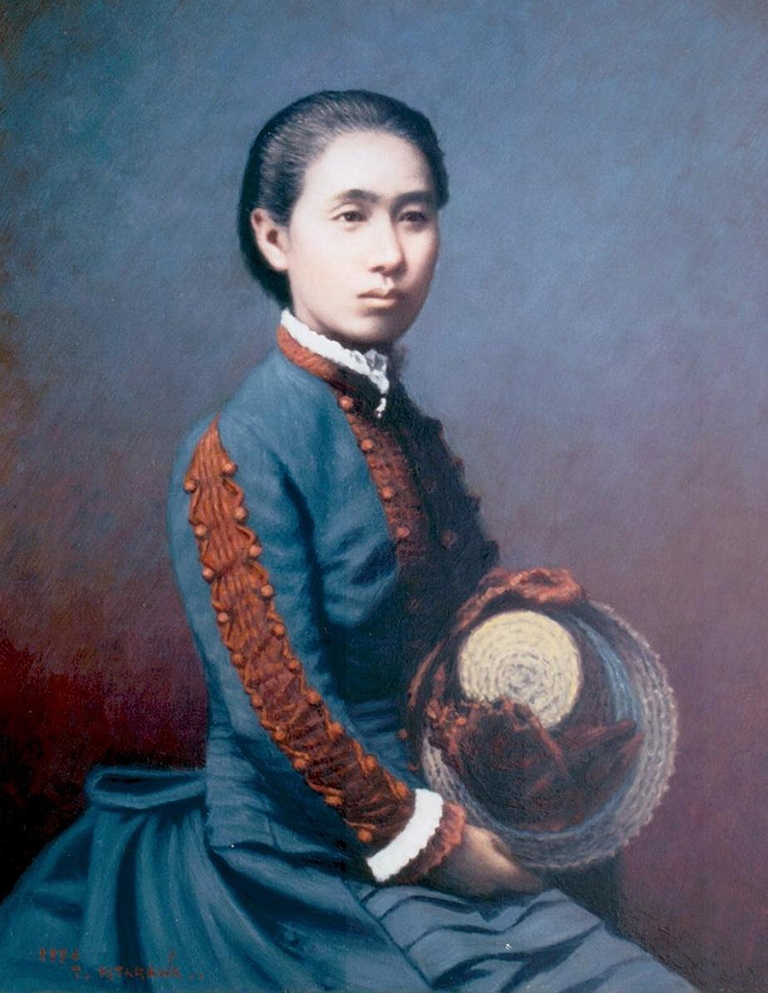The Confucianist had connections. One was with a hospital in Tokyo that pioneered in Western medicine. Perhaps Ogino could be helped there. The treatment was effective but excruciating — not physically, psychologically. The doctors had no respect for feminine modesty. “Spread your legs!” Ogino died a thousand deaths. Why were there no female doctors? Suddenly she sat bolt upright in bed. She would be a female doctor!
Her mother, her first confidante, couldn’t believe her ears. “Are you in your right mind?” No, it was too much. She was an independent, open-minded woman, for her time and place — but this was going too far.
“Is it wrong,” Ogino asked, “to want to help suffering people?”
The old lady exploded. “That’s what male doctors are for. Cutting arms and legs, seeing blood — that’s not for women.” Imagine, she said, the laughter of the neighbors — a female doctor! Think of the stain on the Ogino name!
But the idea had got into Ogino’s blood. If it meant being disowned, she’d be disowned. Determination would conquer all obstacles. But the obstacles were formidable. What medical school would accept her? Let her first qualify as a teacher, advised the Confucianist. That was bold enough. It would at least give her a foot in the academic door. Something might come of it.
It took years, but at last she won permission to attend lectures at a medical school. There she was, one woman among 100 or so catcalling, outraged men: “Are you going to take men’s pulse?” “See men naked?” “Woman! Get out!” On the way home one day she was waylaid. Her presence among men proved she was no better than a whore; they’d use her accordingly. Ogino faced them down. “You want my body?” She told them about her venereal disease. They backed off, spitting in her face to symbolize victory regardless. Left alone, she broke down. Should she go to the police? Better not. Here’s proof, they’d all say, that a woman has no business doing what she was doing.
One step led to another. There she was, a student intern, a long way yet to go but a long way come. She faced her first patient, a middle-aged shop clerk with samurai roots. He had a wound in his upper arm. The pus needed to be drained, the bandage changed. Ogino introduced herself. The man glared at her. No woman was going to touch him. She pleaded, cajoled, bought him gifts. He was immovable. How could he face his ancestors? If he submitted he’d have to disembowel himself. Is that what she wanted?
Astonishingly, she won him over. But everything about this woman is astonishing. And finally she qualified. She was a doctor. All she needed was a license permitting her to open a gynecology clinic. Such a license had never been accorded a woman. She wrote letters to the authorities. They went unanswered. She would have to go in person. She went. She informed the male clerk squinting at her that she desired to speak to the director. The clerk laughed in her face — perhaps not maliciously. He may well have thought she was pulling his leg and wasting his time. A female doctor? A more senior functionary approached. Come, come, he said in effect — forget this nonsense, get married.
“Look,” he said, “just think about it. Women get pregnant. Every time that happens you’d have to leave your patients in the lurch, adding to their anxiety. And then there are the unclean days every month.”
That will sound familiar to anyone following the Tokyo Medical University scandal, in which similar reasoning was invoked as quasi-justification.
Ogino’s subsequent career is apt to disappoint. She opened a clinic, attracted many patients and was a good doctor, but not a brilliant one. Her grim struggle had hardened her. Her disdain for helpless victims of life, fate and circumstances is understandable — it’s what she herself refused to be — but chilling all the same. As she aged, medical passion yielded to Christian passion. The church, unlike Japanese society, opened its doors to women: The sign on the door of the church she attended read, “Anyone at all, please come in any time.”
In 1890, she married a Christian utopian many years her junior. Soon after the wedding he left for Hokkaido. There in the wild he would found an ideal Christian society.
In 1894, she closed her clinic and joined him. Heroic effort was not enough. The colony foundered. He died; she returned to Tokyo intending to resume practice, only to find that her skills, so painfully acquired, were sadly out of date. It’s an anticlimactic ending. She’s a wonderfully inspiring figure all the same, one whose life and career are well worth pondering as, just over a century after her death, events force us to wonder: How much has really changed?
